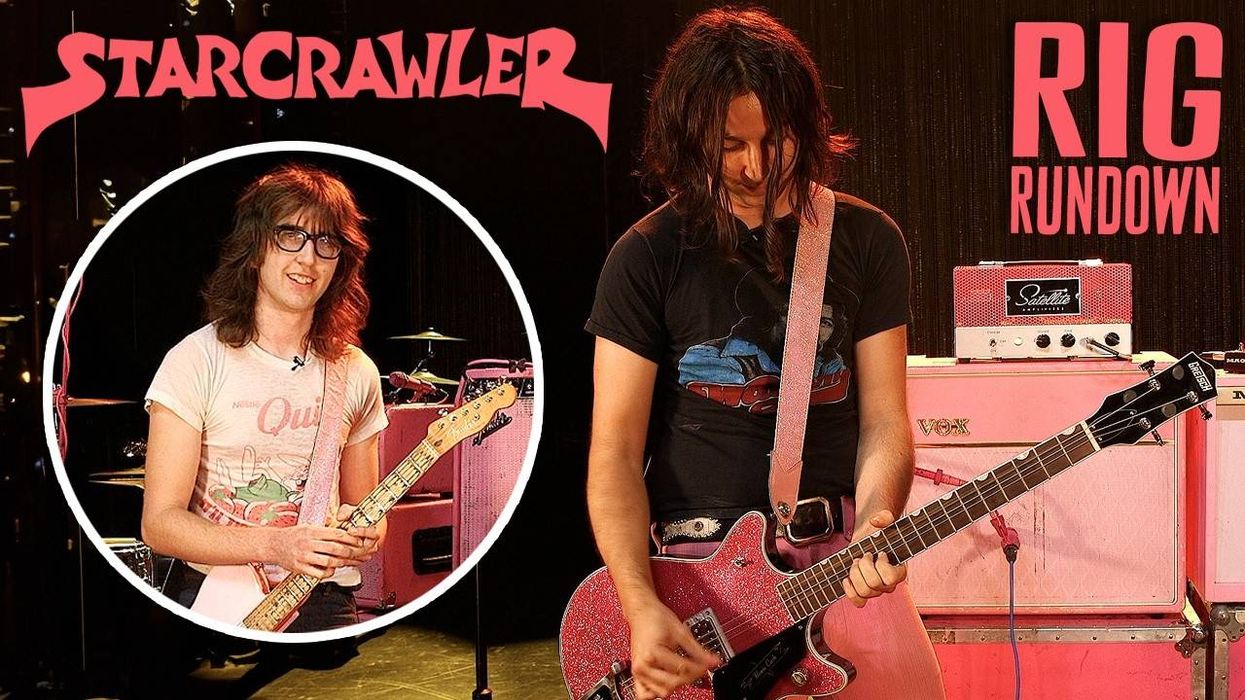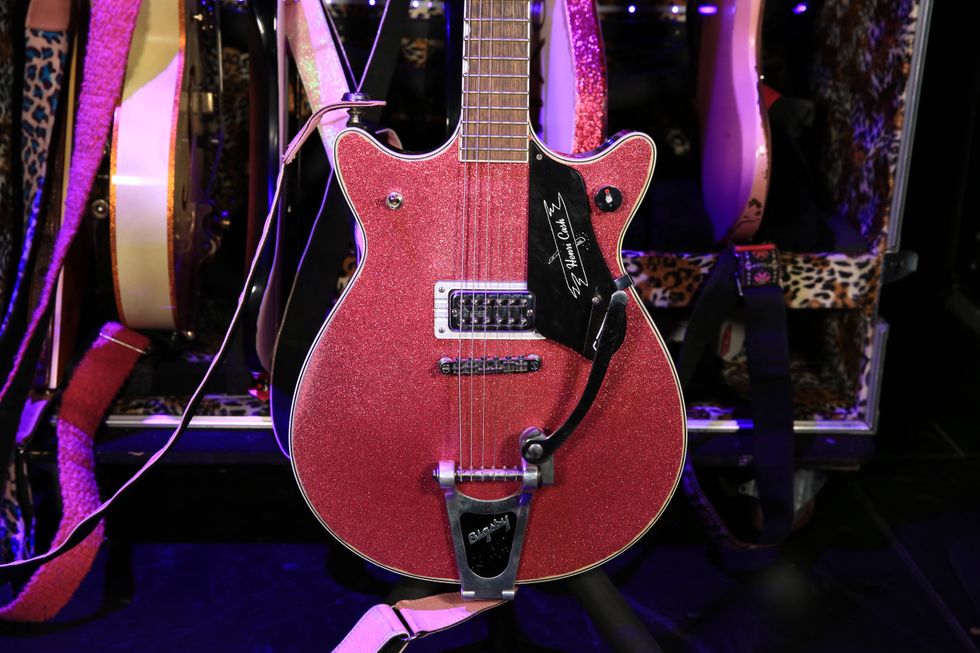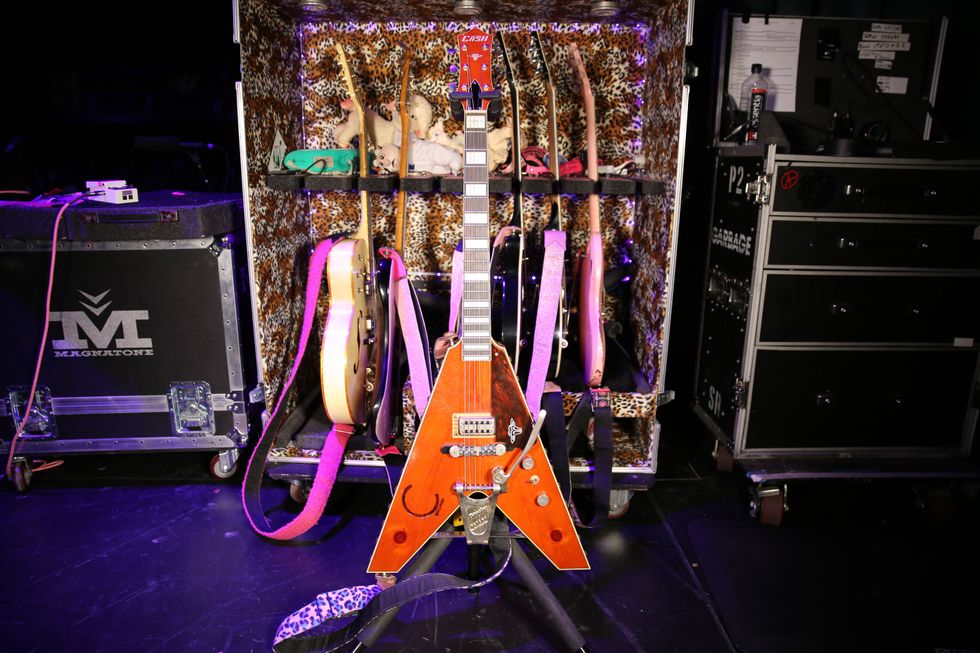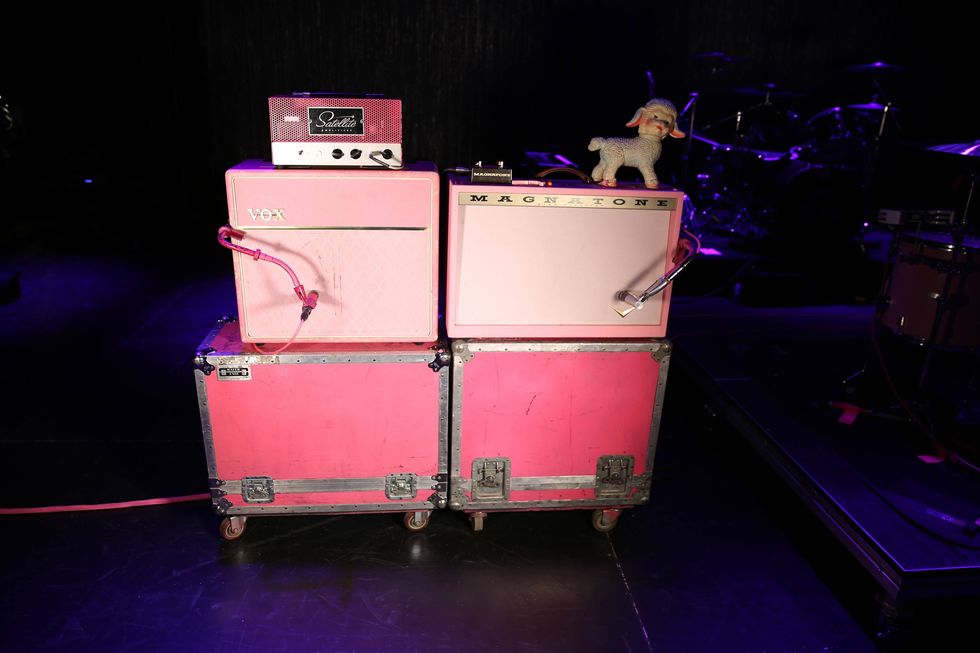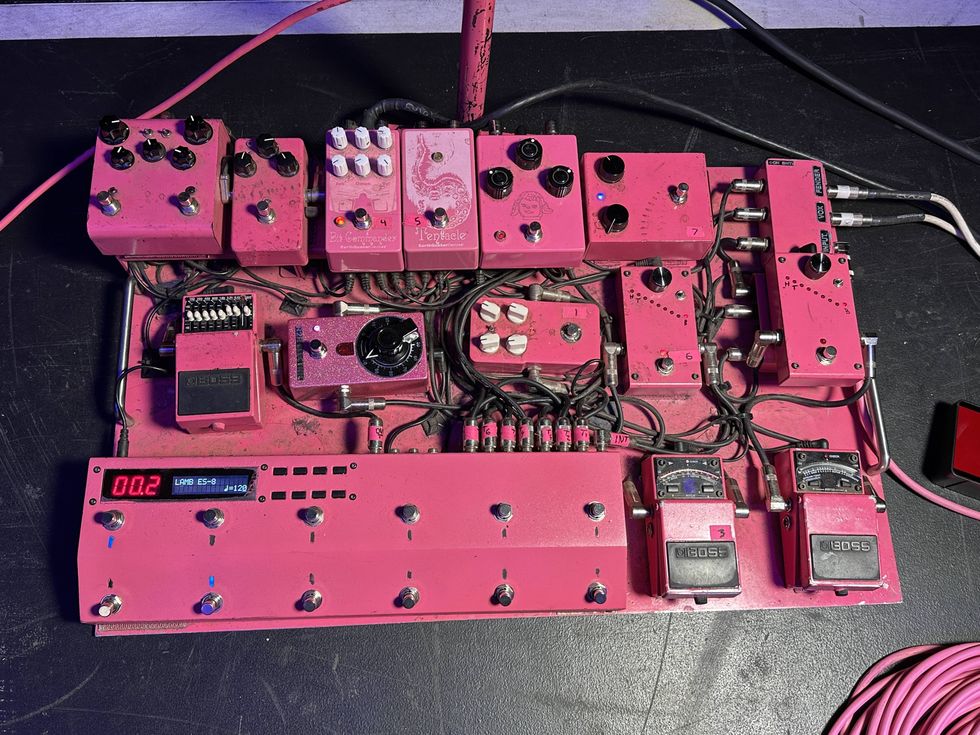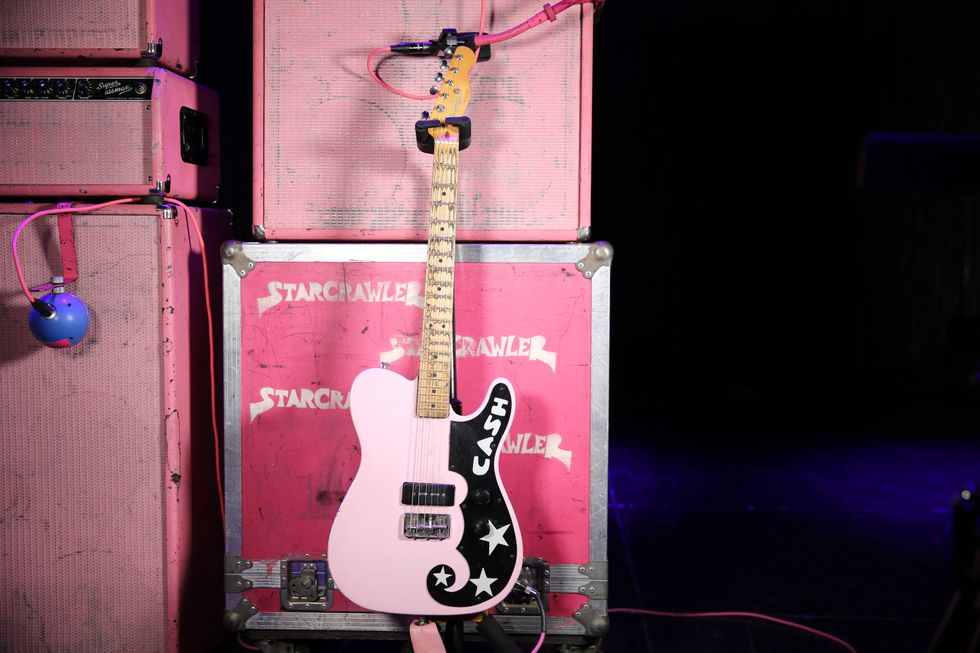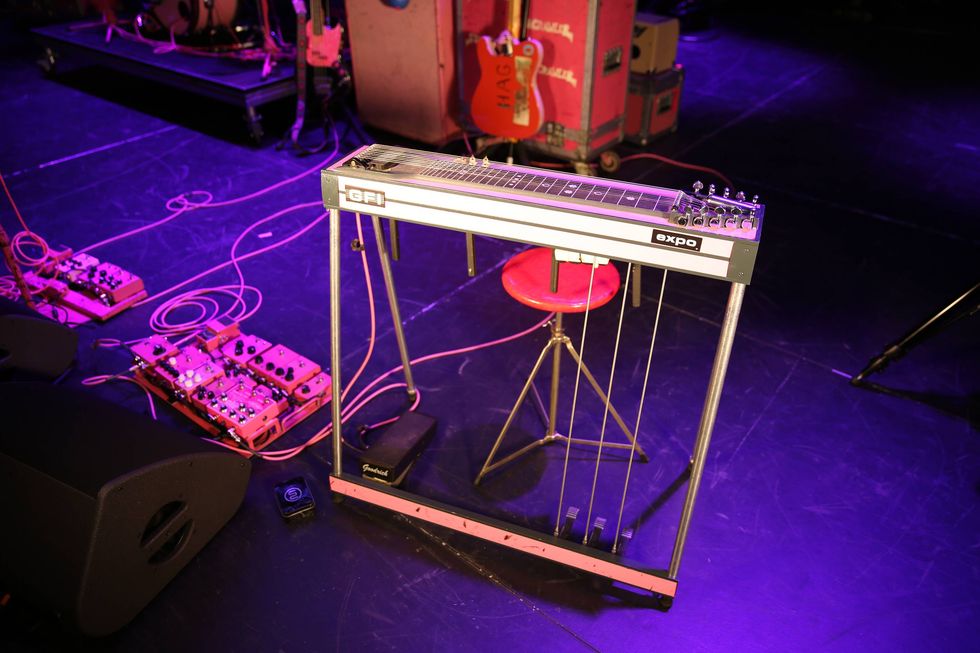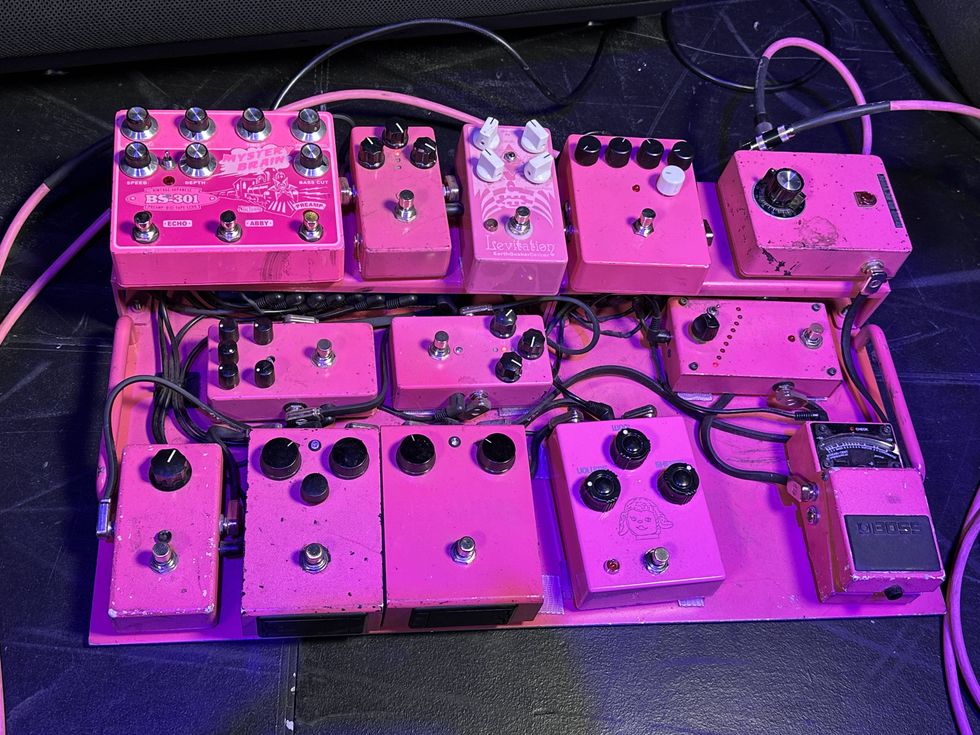Do you hear that thunder? That’s the sound of strength in numbers. Specifically, it's the sound of four 100-watt stacks. (Actually, one is a 200-watt bass tube head.) Idles guitarists Mark Bowen and Lee Kiernan finally have the firepower to match their fury. (Original members singer/lyricist Joe Talbot, drummer Jon Beavis, and bassist Adam Devonshire fill out the band. Kiernan took over for guitarist Andy Stewart after 2015 EP Meat was released.)
For much of the 2010s, the bashers from Bristol played on anything and plugged into everything. Low-budget imports and solid-state combos were what they had and they made that work. They toiled around the U.K. sharpening their sneering tongue, quickening their sting, and focusing their vision. Doing so meant playing small rooms as much as possible. So the need and access for big, potent, top-shelf gear was unnecessary. That volatile energy, sensible setups, and Sten-gun attack anchored both 2017’s Brutalism and 2018’s Joy as an Act of Resistance.
The popularity in those releases opened doors to new tools and the time to explore fresh tones and approaches. When writing Ultra Mono, Bowen and Kiernan looked for sounds rather than riffs.
“The noise-making had to be thought of from the start,” Bowen told PG in 2020. “We basically created a sound palette first, and once we created a sound, that sound informed the riffs.”
And the most obnoxious sounds on Ultra Mono were intentional.
“When we were writing this album, we’d go to random guitar shops and ask them for the weirdest pedals they had,” adds Kiernan. “It may sound useless, but it still might touch you somehow. Every now and then, a pedal that does something really weird will kick you into gear.”
Using hip-hop beats as a North Star and often performing on their instruments as drummers, the duo unlocked a combination of heartless sounds for Ultra Mono that elevated Talbot’s heartfelt (and challenging) lyrics.
For the just-released Crawler, they continued exploring obtuse sounds. Some continued to be unusual to the masses and others were atypical for Idles. “Car Crash” is a disjointed, cold-war-siren-sounding, brooding banger. Considering its brash, bizarrely brilliant predecessor, it’s right in line. However, one track no one saw coming was “The Beachland Ballroom”—a bring-you-to-your knees soul song. The incessant brave exploration advances their brutal power, supports their menacing energy, and paints with broad colors to complement Talbot’s biting commentary and tales of personal troubles.
Touring ahead of 2021’s Crawler (now available), Idles’ Mark Bowen and Lee Kiernan invited PG to Nashville’s Cannery Ballroom for an extended gear chat before their sold-out show. Just ahead of soundcheck, Kiernan clarified his seemingly callous treatment of his Fenders, while Bowen establishes that his acrylic Electrical Guitar Company EG 500 is heavy to dance about onstage, but its “angry piano” sound makes it worth it. They explain why they need a collective of five pedalboards and 50+ stomps to cover guitar, bass, baritone, synth, inhuman sounds, and whatever they mean when they say “genk.” (In a 2020 interview with PG, Bowen described the term like this: “’Mr. Motivator’ is a good example: Lee makes this ‘genk’ noise that sounds like a hammer in a metal factory, and he plays that along with the drums, and that part really only occupies a frequency range around 1.2k to 2.3k—which is a large bandwidth, but it’s where the transients of the drums and the cymbals sit. That part really pops in that space.” Also, Bowen and Kiernan created a YouTube show called Genks during the pandemic, which focuses on effects. Even if you’re a minimalist, it’s worth a watch for the laughs.)
Big thanks to Idles tech Gavin Maxwell.
[Brought to you by D’Addario XPND Pedalboard: https://www.daddario.com/XPNDRR]
“It’s Not Carelessness, I Just Do What I Want with It”
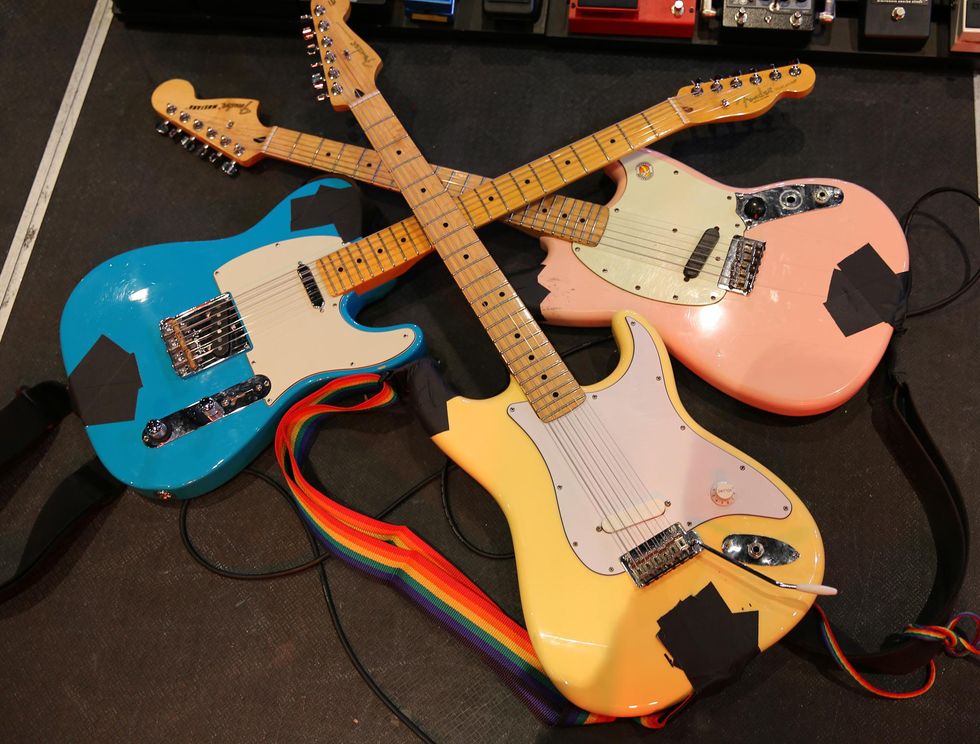
To the outside observer, stacking your Fenders on the floor, using gaff tape as strap locks, and carrying on with broken knobs and missing switches may seem like a fool’s errand for Idles guitarist Lee Kiernan, but it’s all part of his master plan.
“Playing it however I want, or smashing it against an amp, or rubbing a microphone on it, is all a part of using the tool,” Kiernan explains. “It’s made of wood so when it breaks, you just glue it back together.”
Above you see Kiernan’s trifecta of trouble. A quick glance and you notice the shell-pink Mustang and yellow Strat have been severely simplified. (“Less parts mean less things to go wrong,” says Kiernan). Both of their stock wiring setups and pickups were removed. He had Bristol (UK) tech Steve Hawkers drop in custom-wound single-coils (“all bass and all treble”) and solder them straight to the output jack. (Kiernan admits that it was Steve’s first pickup wind.) The only control on either is a volume knob. (As Kiernan demonstrates in the Rig Rundown, the Mustang’s volume knob is hanging by a thread and used in conjunction with strong neck bends producing a howling-train-in-the-distance sound.) The Strat still has its tremolo arm because Kiernan loves ’80s hair metal and can indulge in a dive bomb or two.
The untouched American Professional II Tele gets stage time when the band performs songs off their brand-new album Crawler. Upon receiving the guitar, Kiernan was doing as guitarists do—plugged it in and started hearing what it had to say. He slid it into the neck position with the tone rolled all the way off and singer Joe Talbot heard his noodling and wondered what it was for. Kiernan said it was him just testing out the guitar, but the process led to Crawler’s “When the Lights Come On.”
“This guitar, within seconds of its life, ended up helping write a song,” recalls Kiernan. “It’s staying as it is. I’m not gonna change it.”
All the guitars use Ernie Ball Not Even Slinkys (.012–.056) and he assaults the strings with Dunlop Tortex Standard 1.14 mm purple picks.
Loud and Proud
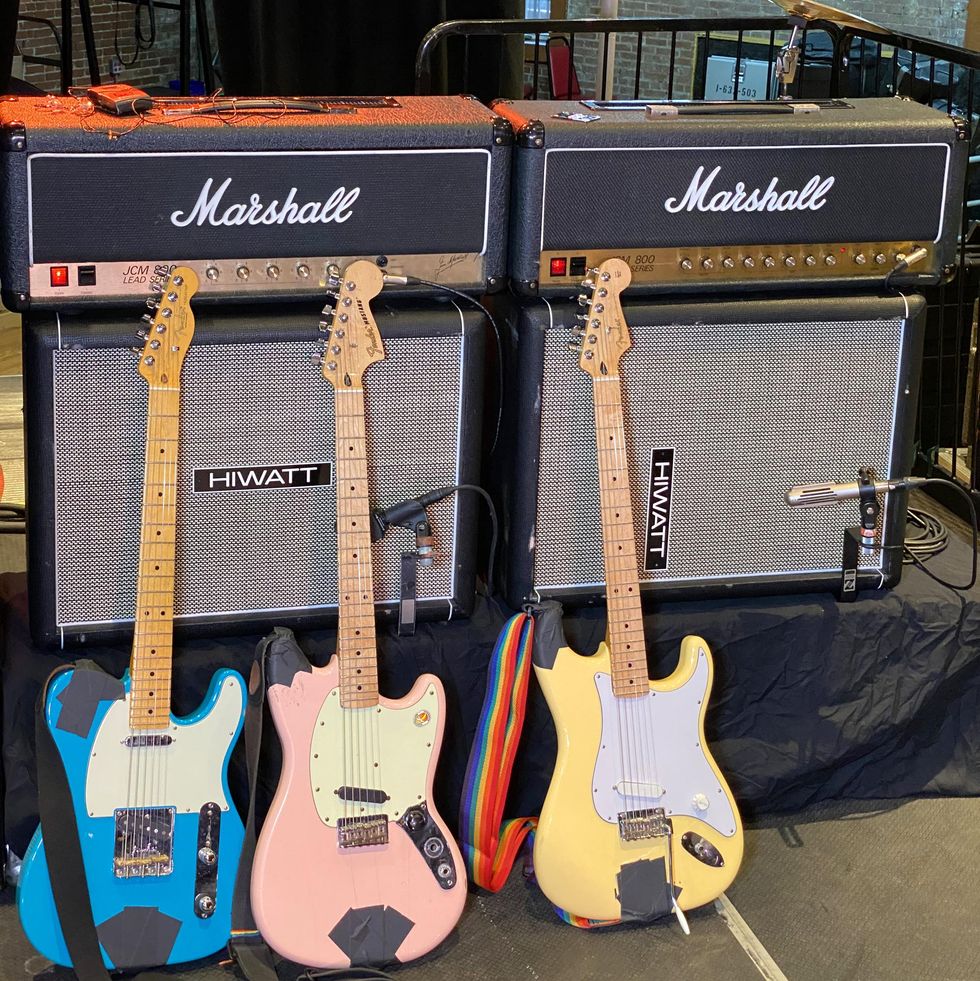
When the band was playing smaller rooms and had no money, they opted for whatever shabby amps they could plug into (including Peavey Pacer and Marshall Valvestate combos). Solid-state or tube, it didn’t matter as long as it made racket. Now that they’re selling out large clubs and theaters, the boys from Bristol crave as much volume and headroom as possible.
Kiernan’s first flirt with a tube Marshall was when he encountered a late-1980s, 2-channel JCM800 2x12 combo he adored. While recording Ultra Mono, he used several amps, including a 2003 Marshall 100-watt Super Lead plexi reissue and a 2000s 100-watt Marshall JCM800 2203. So it made sense for the fall 2021 U.S. run that Kiernan requested the above 100-watt Marshall JCM800s. The one on the left is a 2013 Model 2203, while its counterpart on the right is a 1989 Lead Series Model 2210 (with master volume and reverb). (Kiernan mentions in the Rundown that in Europe they use the SLP and 1897x models.) Both Marshalls hit their own Hiwatt 2x12s that are loaded with Fane Ascension F70 creamback speakers.
Double the Fun
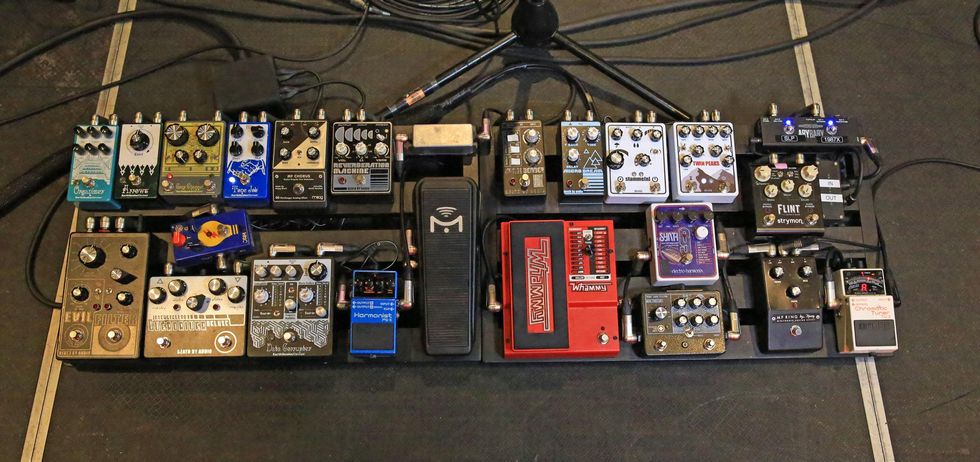
The time spent mentioning everything Kiernan does with these pedals is better served watching the Rundown, listening to Idles’ music, or attending one of their shows. But in doing our due diligence, here are the stomps that corrupt, challenge, and ravage his tone.
Starting with the top row on the right-side board, we have a Strymon Flint, Drolo Twin Peaks (tremolo), Drolo Stamme[n] (micro looper/glitch delay/tape machine/sustainer/reverb), Death By Audio Micro Dream (delay), and a Death By Audio Space Bender prototype (modulation). The bottom row is home to a DigiTech Whammy, Electro-Harmonix Synth9, Intensive Care Audio Vena Cava Filter (distortion with an auto-filter and ring modulation), Moog MF Ring, and a Boss TU-3 Chromatic Tuner. A GigRig ABY-BABY controls the amp offering phase control and isolation. The small black box labeled “in/out” was built by tech Gavin Maxwell so Kiernan could quickly test out a pedal without having to rip his setup apart.
The left-side board starts with a Mission Engineering EP-1 expression pedal, a Boss PS-6 Harmonist, an EarthQuaker Devices Data Corrupter, a Death By Audio Interstellar Overdriver Deluxe, and a Death By Audio Evil Filter. The top row starts with a quartet of EarthQuaker stomps—Organizer (polyphonic organ emulator), Arrows (preamp boost), Gray Channel (overdrive), and Tone Job (EQ/boost)—a Moog MF Chorus, and Death By Audio Reverberation Machine. A Jam Pedals TubeDreamer is sandwiched in between everything.
Smells Like Home
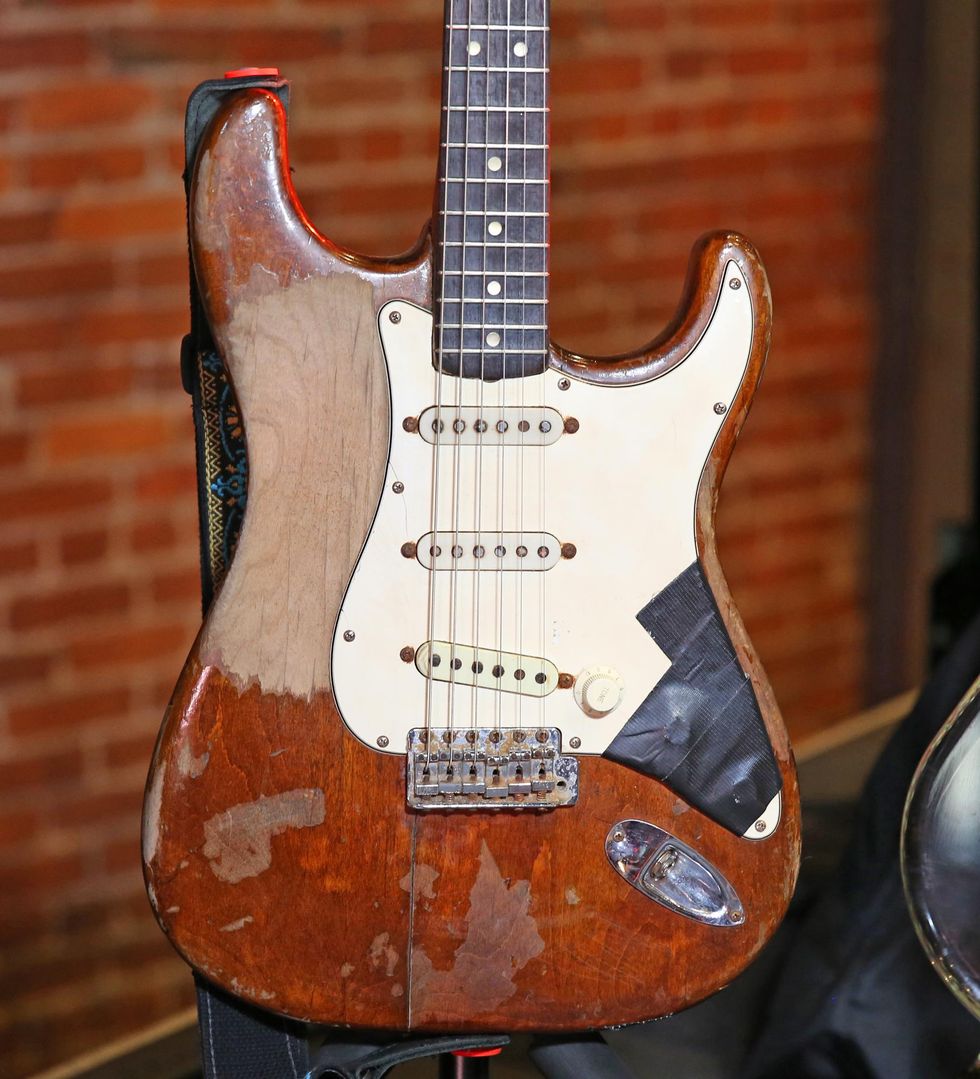
Mark Bowen’s longtime main cruiser was this 1972 Fender Stratocaster he affectionately calls “Stinky.” This well-loved Strat belonged to Bowen’s dad and was gifted to him years ago. In a 2020 interview with PG, Bowen had this to say about his foul-smelling friend: “Stinky’s action is horribly high and it’s a terrible guitar to play, but I just love it because it feels like a real punk-rock guitar. That guitar lives for me, in a way, so that it makes its way onto everything.”
Besides the action, another thing making this Strat a struggle to commandeer is the Ernie Ball Mammoth Slinkys (.012–.062) he puts on his guitars. He bludgeons his instruments with Dunlop Tortex Standard 1.14 mm (purple) picks.
The Angry Piano
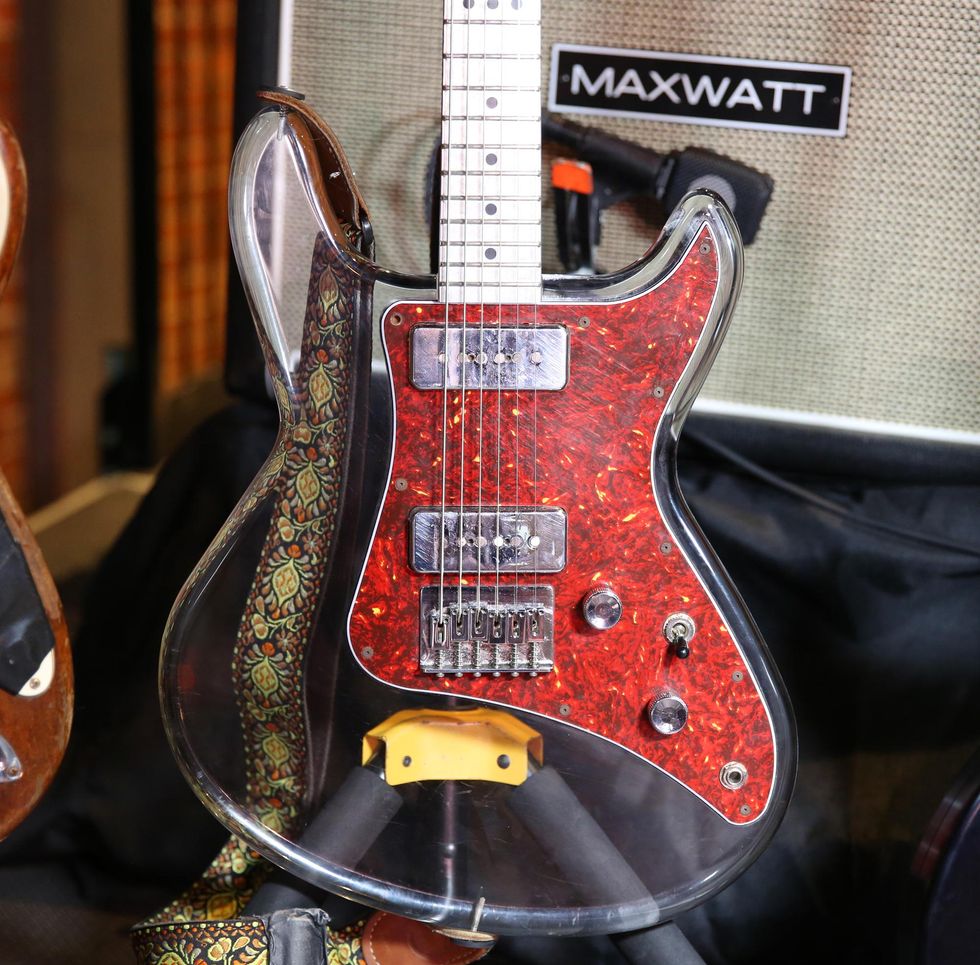
While Bowen still tours with “Stinky,” his preferred weapon of choice right now is this Electrical Guitar Company EG 500. Speaking with PG last year, he had this to say about the acrylic beauty: “It’s so much louder than other guitars, and there’s this resonance to it that really fits in with my ethos and songwriting. It sounds like an angry piano. That guitar is capable of really horrible caustic sounds, but immediately switches over to making these weighty, thuddy doom-metal sounds.”
Stealth Bomber
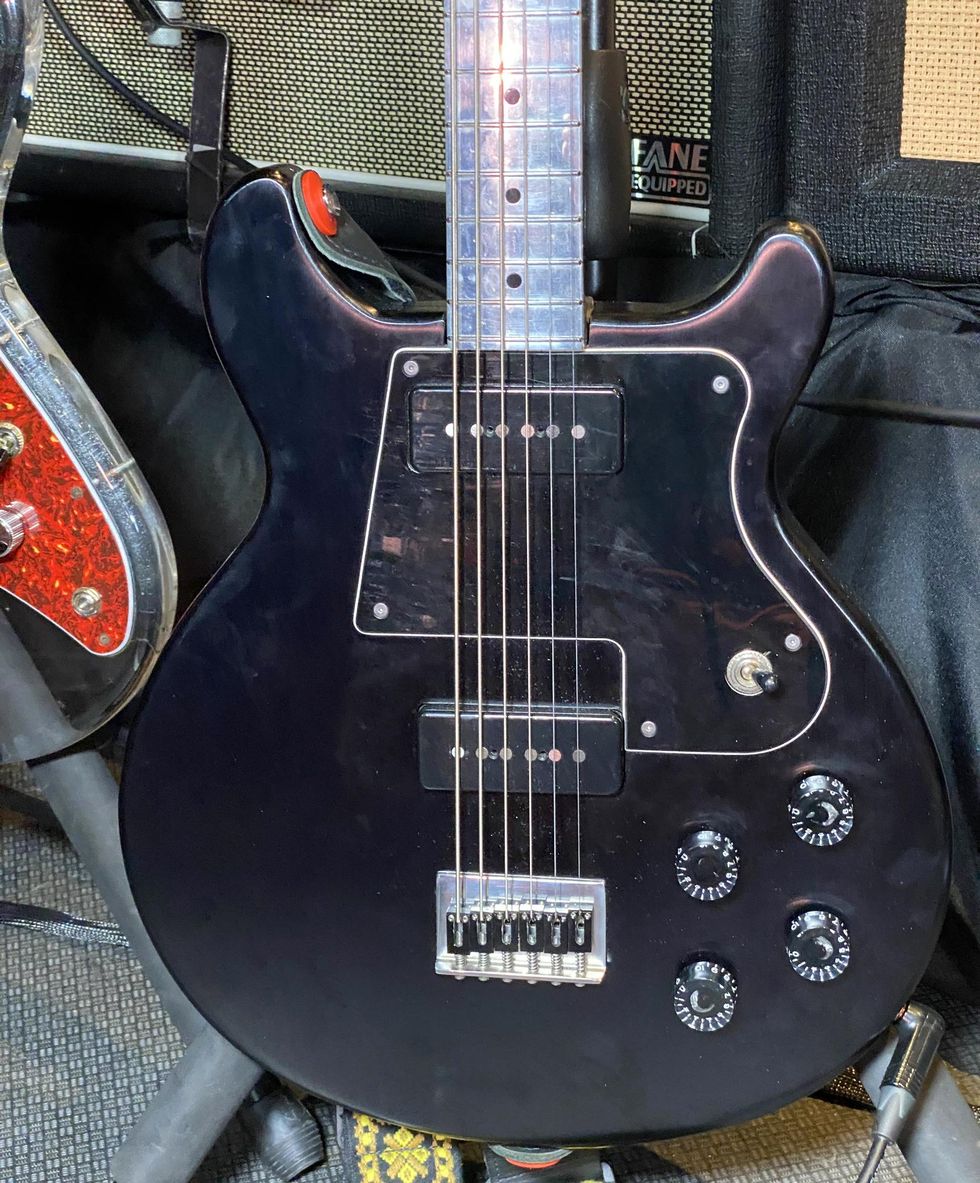
For anything low, rumbly, and absolutely nasty, Bowen picks up this Electrical Guitar Company Standard baritone (borrowed from Mogwai’s Dominic Aitchison). He says the EG 500 pickups are hot, but the humbuckers made for their Standards are “terrifying.”
More Bass, Baby!
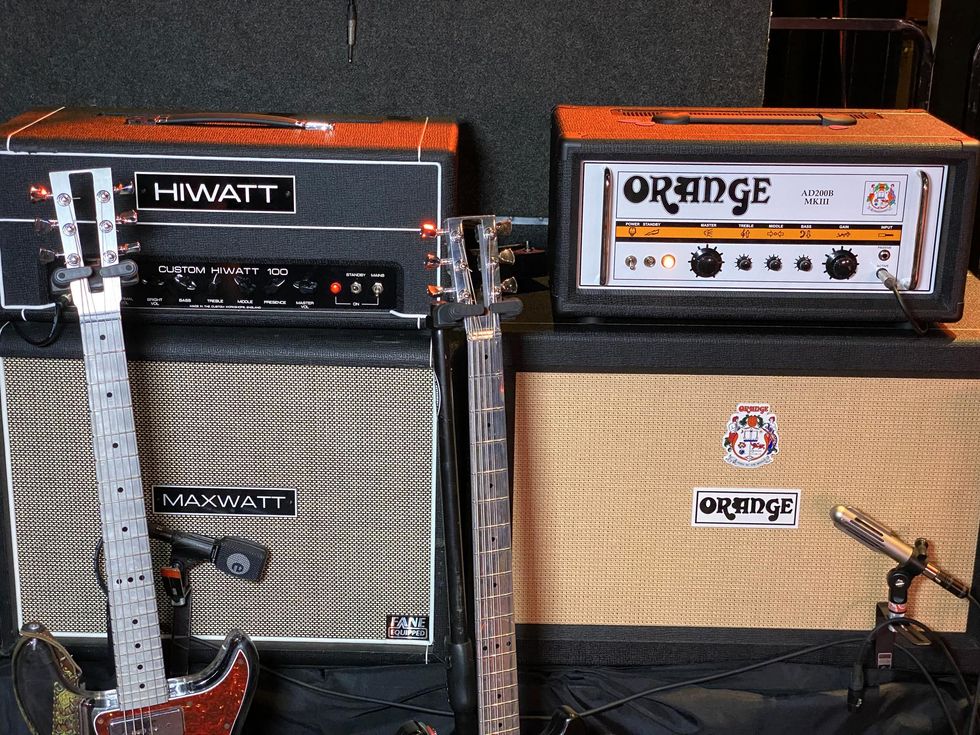
For Ultra Mono, Bowen used a transatlantic amp combination of Hiwatts and Fenders. As the band has progressed from that album, Bowen has drifted his sound deeper and lower into the bass and synth territory. Putting together Crawler, he enlisted an Orange AD200B MKIII, which now travels with him on the road. Still keeping things somewhat in the guitar spectrum, he pairs the bass head with a Hiwatt Custom 100 DR103 reissue. (If you zoom in, you can see the Hiwatt has the bass knob goosed.) It’s worth noting, up until the Nashville date, Bowen had already blown out six Hiwatts, but he claims to never be without one: “There’s just this weight, this thunk that’s there, they’re bright, and the headroom is unmatched.”
Ironically, the Hiwatt runs into a MAXWATT B115HN 1x15 bass cab while the AD200B crushes an Orange PPC212 guitar cab.
Bowen's Central Command
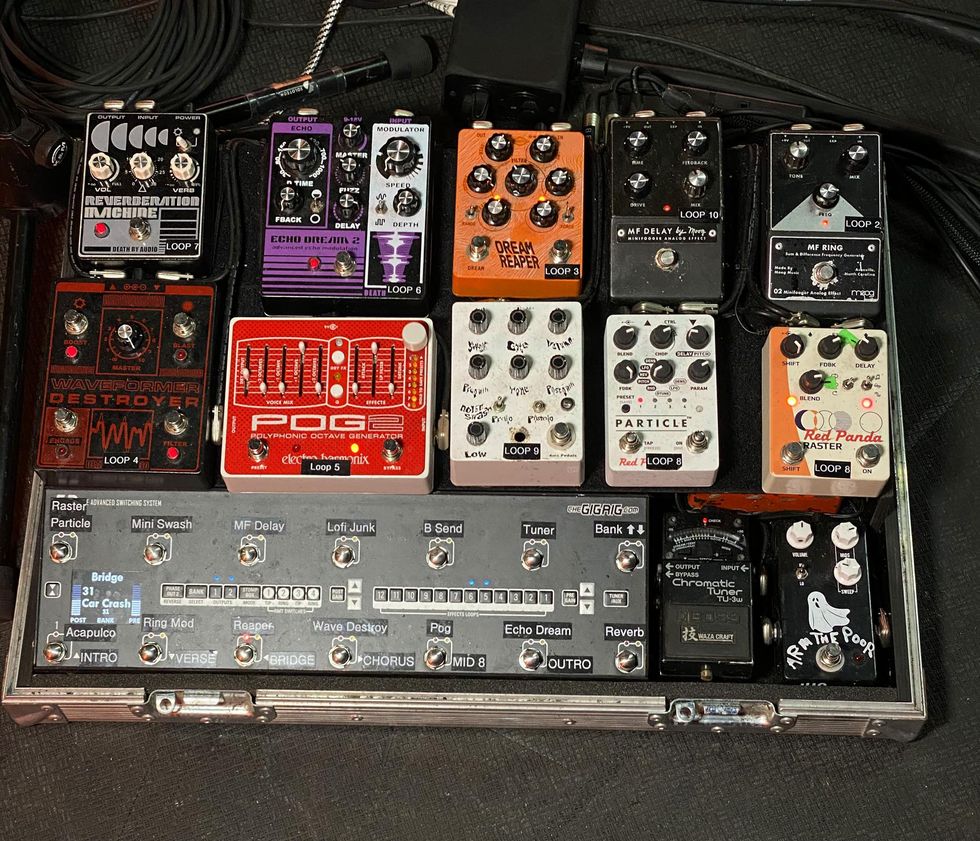
To accomplish all the fantastic and outrageous tones captured on Idles’ last two records, Bowen brings a whole cast of characters to accomplish that feat. His main board (stationed out front onstage by his microphone) features his “most standard” pedals: Death By Audio Reverberation Machine and Echo Dream 2, Adventure Audio Dream Reaper, a pair of Moogs (MF Delay and MF Ring), Death By Audio Waveformer Destroyer, Electro-Harmonix POG2, 4ms Pedals Mini Swash Full (fuzz/distortion/noise synth/self-oscillation/LFO craziness), a duo of Red Panda pedals (Particle and Raster), and a JHS Haunting Mids. A Boss TU-3W Waza Craft Chromatic Tuner keeps his guitars in check and a GigRig G3 organizes all the changes.
Mooger-Fooger Mark Bowen
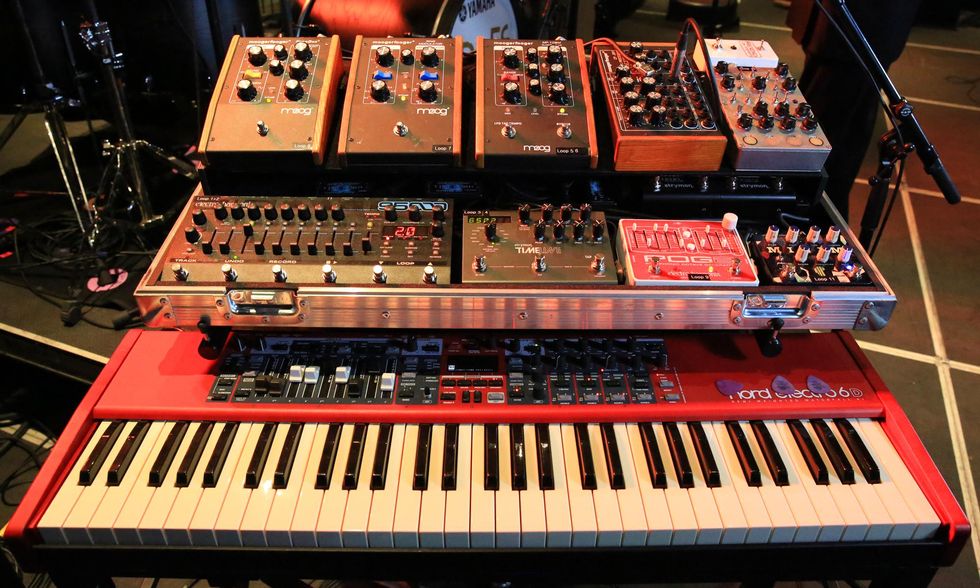
Near his amps, Bowen has another batch of tone morphers. Up top he’s got a 4-pack of Moog Moogerfooger monsters—MF-107 FreqBox, MF-102 Ring Modulator, MF-108M Cluster Flux, and a CP-251 Control Processor—and another no-name glitch/synth device. Below those we have an Electro-Harmonix 95000 Stereo Looper, a Strymon TimeLine, an Electro-Harmonix POG2, and an Old Blood Noise Endeavors Minim (reverb/delay and reverse). Lastly, he has a Nord Electro 6D at his disposal. Everything is powered by GigRig Timelord power supplies, while two Strymon Iridiums handle cab emulations.
Final Destination
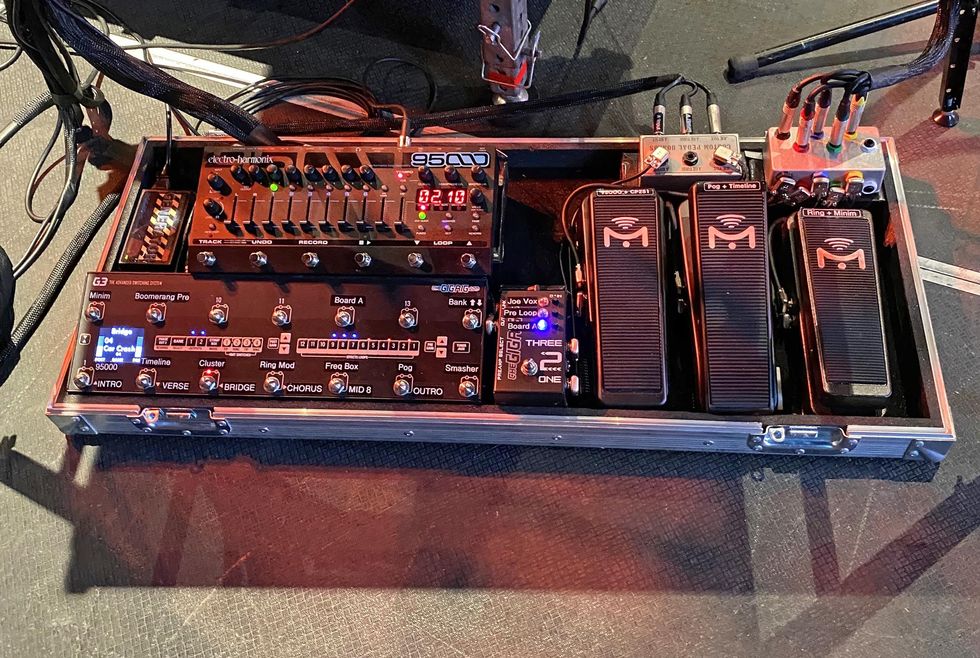
The last part of Bowen’s setup is this board under his keyboard/Moogerfooger workstation. Here, he has another GigRig G3 switcher, another Electro-Harmonix 95000 Stereo Looper, a GigRig Three2One (to help balance levels between instruments), and three Mission Engineering EP-1 expression pedals (controlling some of the effects in the previous photo).





![Rig Rundown: Russian Circles’ Mike Sullivan [2025]](https://www.premierguitar.com/media-library/youtube.jpg?id=62303631&width=1245&height=700&quality=70&coordinates=0%2C0%2C0%2C0)

















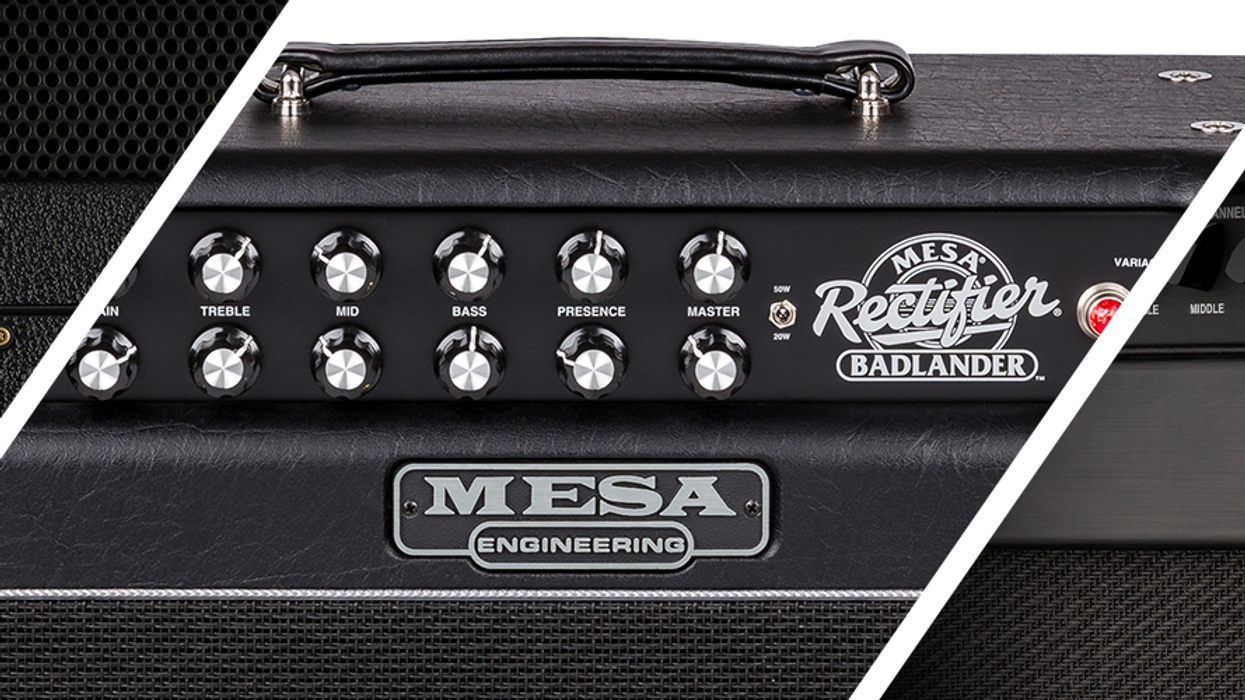

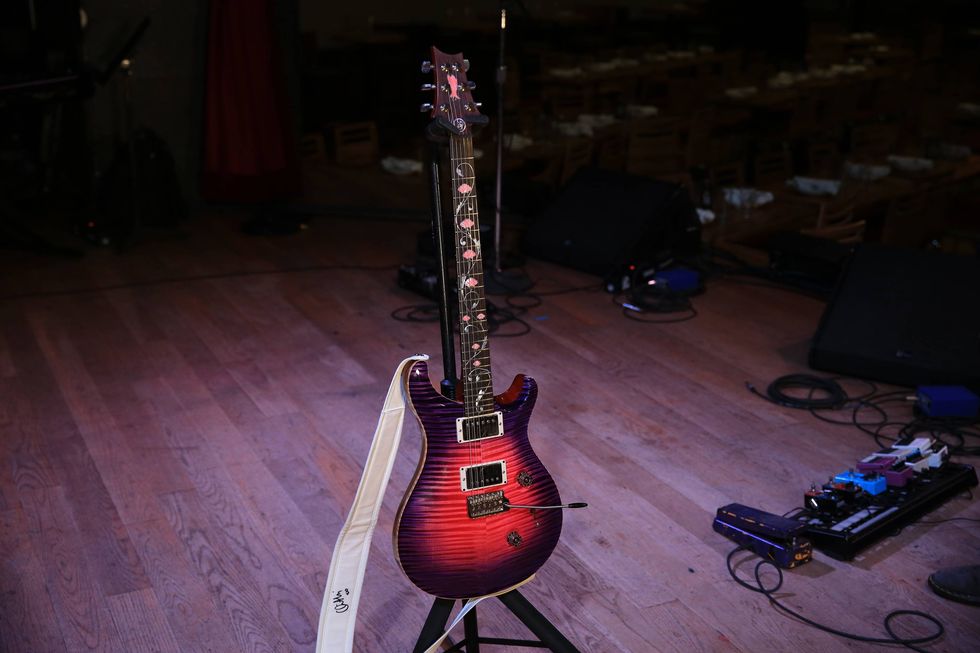
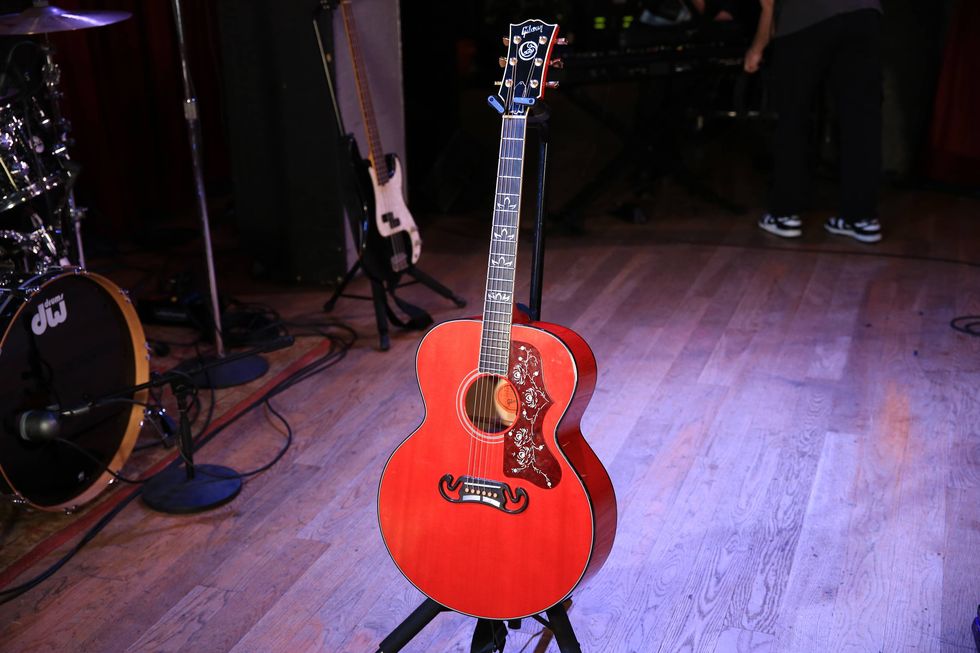
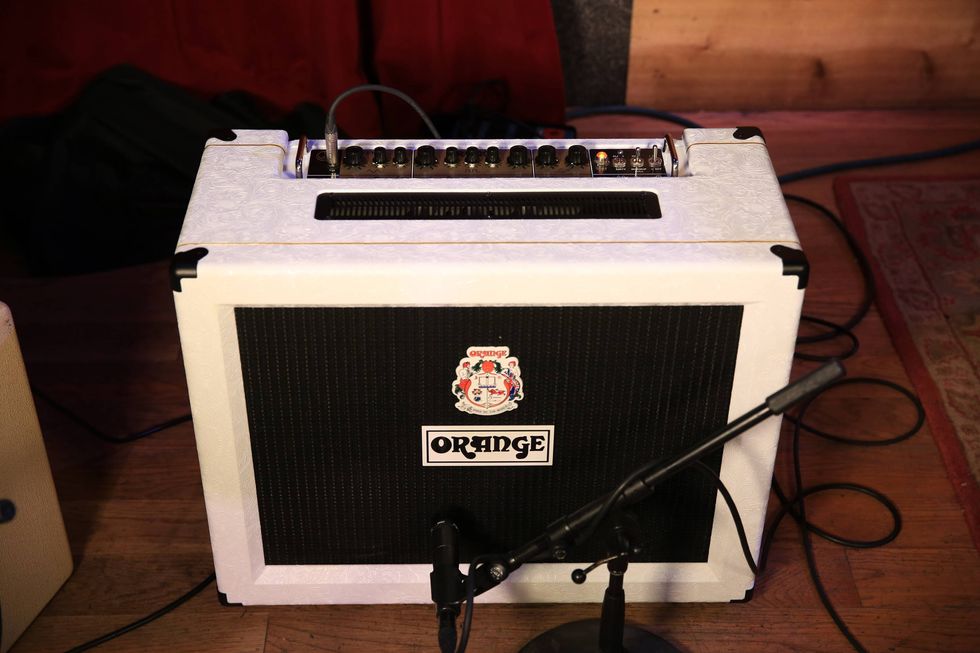
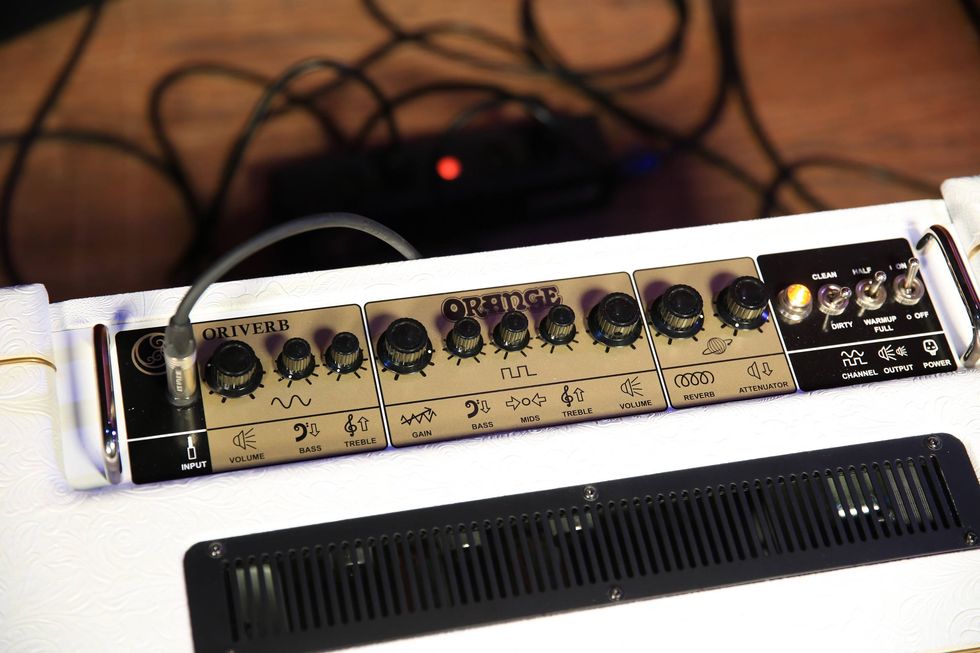
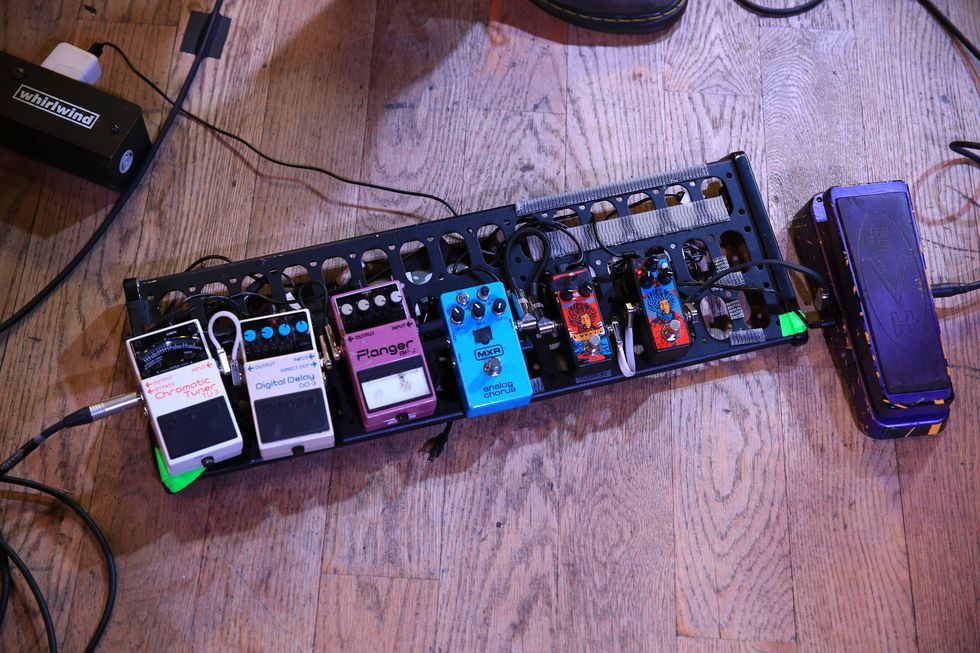

![Rig Rundown: AFI [2025]](https://www.premierguitar.com/media-library/youtube.jpg?id=62064741&width=1245&height=700&quality=70&coordinates=0%2C0%2C0%2C0)




















 Zach loves his Sovtek Mig 60 head, which he plays through a cab he built himself at a pipe-organ shop in Denver. Every glue joint is lined with thin leather for maximum air tightness, and it’s stocked with Celestion G12M Greenback speakers.
Zach loves his Sovtek Mig 60 head, which he plays through a cab he built himself at a pipe-organ shop in Denver. Every glue joint is lined with thin leather for maximum air tightness, and it’s stocked with Celestion G12M Greenback speakers.







